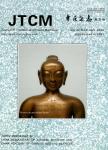Evaluation Indicators of Traditional Chinese Medicine Syndromes for Gouty Arthritis with Damp Heat Accumulation and the Effect of Administering Tongfeng Qingxiao formula(痛风清消方)
作者机构:College for Clinical Medicine, Jiangxi University of Chinese Medicine Department of Orthopedics, Ruikang Hospital Affiliated to Guangxi University of Chinese Medicine Graduate School, Guangxi University of Chinese Medicine Department of Orthopedics, Affiliated Hospital of Jiangxi University of Chinese Medicine
出 版 物:《Journal of Traditional Chinese Medicine》 (中医杂志(英文版))
年 卷 期:2024年
核心收录:
学科分类:100506[医学-中医内科学] 1006[医学-中西医结合] 1005[医学-中医学] 100602[医学-中西医结合临床] 10[医学]
基 金:Supported by the National Natural Science Foundation of China a Study on the Use of Tongfengqingxiao for Treating Gouty Arthritis and Neutrophil Extracellular Traps Formation based on the Transforming Growth Factor-β1 Signaling Pathway (No.81860857) A Study on the Mechanism by which Tongfeng Qingxiao Regulates the Toll-like receptors-Myeloid differentiation factor 88-Nuclear factor kappa-B Signaling Pathway in Gouty Arthritis rats with Gut Dysbiosis and Dampness-Heat Syndrome based on the Gut-enteric-microbiota Axis (No. 82060871) National Natural Science Foundation of Jiangxi Province a Study on the Regulatory Mechanism of the Toll-like receptors-Myeloid differentiation factor 88-Nuclear factor kappa-B Signaling Pathway Related to Dysbacteriosis of the Intestinal Flora with Gouty Arthritis in Rats Mediated by Tongfengqingxiao,Based on the “Gut-Microbiota” Axis (No. 20202BAB206071)
摘 要:OBJECTIVE: To evaluate the indicators of an animal model of gouty arthritis (GA) with dampness heat accumulation and the intervention effect of Tongfeng Qingxiao formula (痛风清消方, TFQXF).METHODS: Seventy-two healthy adult Sprague-Dawley male rats were selected and randomly divided into a normal group, model group, low-dose group, medium-dose group, high-dose group, and diclofenac group using a random number table method, with 12 rats in each group. After group intervention, the general condition of the rats in each group was monitored and recorded, and the swelling index was measured. After separating the serum, the changes in glutamic pyruvic transaminase (ALT), glutamic oxaloacetic transaminase (AST), carbamide (UREA), creatinine (CREA), triglyceride (TG), total serum cholesterol (TC), low density lipoprotein cholesterol (LDL-C), and high density lipoprotein cholesterol (HDL-C) in the serum of the rats in each group were measured using an automatic biochemical analyzer. The levels of motilin (MTL), gastrin (GAS), endothelin (ET), calcitonin gene-related peptide (CGRP), heat shock protein 70 (HSP70), interleukin (IL)-1β, and nuclear factor kappa-B (NF-κB) in the serum of the rats in each group were evaluated using enzyme-linked immunosorbent assay (ELISA) kits. Kidney tissues were used to evaluate the protein and mRNA expression of aquaporin (AQP)1 and AQP2. Colon tissue was used to evaluate the protein and mRNA expression of AQP3 and AQP4 by Western blotting (WB) assay and real-time quantitative polymerase chain reaction (RT-qPCR). The levels of ALT, AST, UREA, and CREA were used to evaluate the liver and kidney function of rats. The levels of MTL and GAS were used to evaluate the gastrointestinal function of rats. The levels of TG, TC, LDL-C, HDL-C, AQP1, AQP2, AQP3, and AQP4 were used to evaluate the dampness syndrome performance in rats. The levels of ET, CGRP, and HSP70 were used to evaluate the heat syndrome performance in rats. The levels of IL-1β and NF-κ



